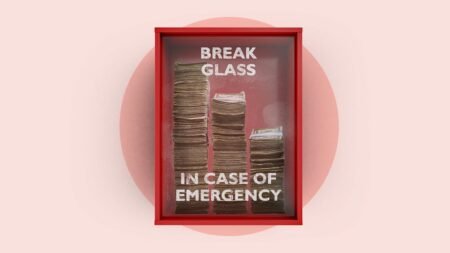Key takeaways
- Car-lease incentives can help make leases more affordable.
- The three main types of lease incentive programs are lease cash, subsidized interest rates and subsidized residual values.
- You may have to watch out for balloon payments at the end of the lease and state taxes on incentives.
If you’re itching for the car of your dreams, lease incentives can make getting on the road more affordable: Lease cash, lower interest rates and higher residual values mean lower monthly car lease payments. There are still a few drawbacks to consider before signing up if you want to avoid making any car leasing mistakes.
What are lease incentives?
Car-lease incentives are benefits automakers offer to entice consumers to lease a vehicle. Automakers regularly advertise lease incentives through their websites, radio stations, TV commercials and direct-mail ads. Car-lease incentives make leasing a specific type of car more affordable.
4 types of car-lease incentives
Before heading to the dealership, there are four common types of car-lease incentives to be aware of.
1. Lease cash
Lease cash is similar to a rebate. Lease cash is a flat dollar amount set by the manufacturer that is then discounted from the cost of leasing the vehicle. The total value of lease cash may vary based on the lease term you select. Any restrictions on the cash are outlined on the automaker’s website, usually in the fine print under the offers section.
You may also see these referred to as cash rebates or lease rebates. Some examples include Captive Lease Cash through Honda and Acura or Red Carpet Lease Cash through Ford.
2. Subsidized interest rates
A subsidized interest rate involves the auto manufacturer offering a lower rate for customers with good credit who use the automaker’s lending arm. It’s often referred to as a “lease deal” for a specific monthly payment.
Compare this interest rate with financing you could obtain through another lender to see which is better. Be sure to look through all the details, not just the rates.
3. Subsidized residual values
Residual values are important factors associated with the cost you pay to lease a car. A vehicle’s residual value, which is set by the leasing company, is an estimate of what the car will be worth once the lease ends.
This figure is key because the amount you pay for the lease is the difference between the price of the car at the outset of the lease and its residual value at the end of the lease. For example, if a car’s price is $25,000 at the start of a lease and its residual value is $10,000, then your cost to lease that car is $15,000, an expense that’s divided into monthly lease payments.
As an incentive, automakers or leasing companies may increase the projected residual value in order to lower the monthly lease payments, also known as subsidizing or subventing. To help lower the lease payments, automakers may offer either a subsidized interest rate or a subsidized residual value on a car, but not both. You can also check to see if it’s worth the deal by comparing the payments against an auto lease calculator.
4. Loyalty incentives
Some car manufacturers and auto dealers will offer financial incentives to past lease customers. For example, if you leased a Mazda in the past, the manufacturer offers a Loyalty Reward for returning Mazda Financial Services lessees.
The incentive amount may vary and may not always be available but can be $2,500 or more. Similarly, some Mercedes-Benz dealers may offer Lease Loyalty incentives, such as monthly lease payment credits or bonus cash, that can be used on a new lease.
The EV tax credit
Lessors can claim a federal tax credit of up to $7,500 for qualified EVs, so they often pass that savings on to you if you lease the vehicle. Leasing an EV may be the perfect opportunity to see if the vehicle suits your lifestyle.
3 perks of car-lease incentives
If you can lock in a car-lease incentive, you may benefit in one or more ways.
- Lower payments: Lower monthly payments can free up cash and make it more affordable to drive the car you want. These incentives can keep costs low, either through interest rates or the overall cost through cash rebates.
- Cash in hand: You may receive a check from the automaker or the money may be applied toward the total cost of the lease, but beware of any restrictions that may apply. For example, you may be required to use the auto manufacturer’s financing company to claim the incentive.
- Better car for less: You may go home in the car of your dreams at a more affordable price. If you’ve always wanted to drive a certain vehicle but didn’t have the money to buy it, an incentive may help you drive it for a few years.
What to watch out for
Although lease incentives are perks, there are two main potential drawbacks to signing off on a hefty cash rebate.
Balloon payment
The automaker may require a balloon payment, which is a larger one-time payment at the end of the lease. If your budget won’t allow you to make this payment, you may damage your credit score and face other repercussions.
Keep in mind
If you come across a car-lease incentive that’s too good to be true, it probably is.
Potential state taxes
While car-lease incentives come with notable advantages, they do have one major drawback: Some states tax car incentives and rebates. If you live in a state that does, you may have to pay taxes on the full price of the vehicle before the incentive is applied.
States that don’t tax incentives
- Alaska
- Arizona
- Delaware
- Iowa
- Kansas
- Kentucky
- Louisiana
- Massachusetts
- Minnesota
- Missouri
- Montana
- Nebraska
- New Hampshire
- Oklahoma
- Oregon
- Pennsylvania
- Rhode Island
- Texas
- Utah
- Vermont
- Wyoming
Bottom line
Before you jump at any car-lease incentive read the fine print. Make sure you understand how terms such as lease cash, subsidized interest rates and residual values impact your out-of-pocket costs. Also note the drawbacks of incentives, like balloon payments. Most importantly, consider all the lease terms and whether a lease makes sense for your budget before signing on the dotted line.
Read the full article here

















